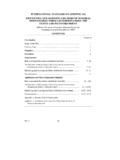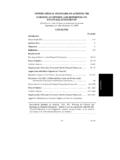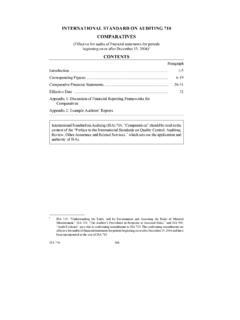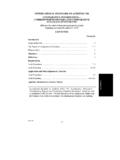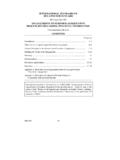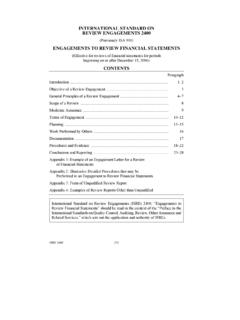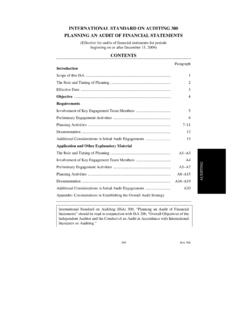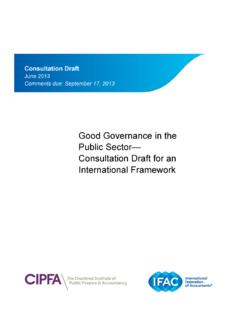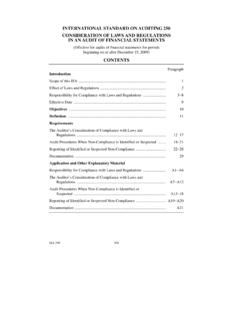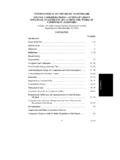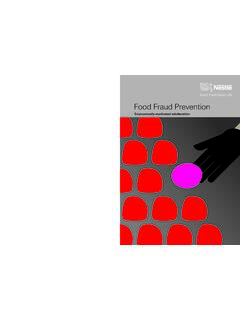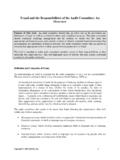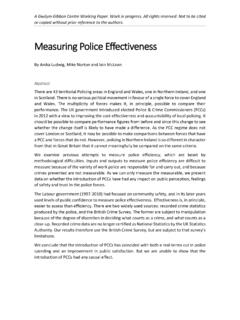Transcription of INTERNATIONAL STANDARD ON AUDITING 240 THE …
1 ISA 240 155 AUDITING INTERNATIONAL STANDARD ON AUDITING 240 THE AUDITOR S RESPONSIBILITIES RELATING TO fraud IN AN AUDIT OF FINANCIAL STATEMENTS (Effective for audits of financial statements for periods beginning on or after December 15, 2009) CONTENTS Paragraph Introduction Scope of this ISA .. 1 Characteristics of fraud .. 2 3 Responsibility for the prevention and Detection of fraud .. 4 8 Effective Date .. 9 Objectives .. 10 Definitions .. 11 Requirements Professional Skepticism .. 12 14 Discussion among the Engagement Team .. 15 Risk assessment Procedures and Related Activities .. 16 24 Identification and assessment of the risks of Material Misstatement Due to fraud .. 25 27 Responses to the Assessed risks of Material Misstatement Due to fraud .
2 28 33 Evaluation of Audit Evidence .. 34 37 Auditor Unable to Continue the Engagement .. 38 Written Representations .. 39 Communications to Management and with Those Charged with Governance .. 40 42 Communications to Regulatory and Enforcement Authorities .. 43 Documentation .. 44 47 THE AUDITOR S RESPONSIBILITIES RELATING TO fraud IN AN AUDIT OF FINANCIAL STATEMENTS ISA 240 156 Application and Other Explanatory Material Characteristics of fraud .. A1 A6 Professional Skepticism .. A7 A9 Discussion among the Engagement Team .. A10 A11 Risk assessment Procedures and Related Activities .. A12 A27 Identification and assessment of the risks of Material Misstatement Due to fraud .. A28 A32 Responses to the Assessed risks of Material Misstatement Due to fraud .
3 A33 A48 Evaluation of Audit Evidence .. A49 A53 Auditor Unable to Continue the Engagement .. A54 A57 Written Representations .. A58 A59 Communications to Management and with Those Charged with Governance .. A60 A64 Communications to Regulatory and Enforcement Authorities .. A65 A67 Appendix 1: Examples of fraud Risk Factors Appendix 2: Examples of Possible Audit Procedures to Address the Assessed risks of Material Misstatement Due to fraud Appendix 3: Examples of Circumstances that Indicate the Possibility of fraud INTERNATIONAL STANDARD on AUDITING (ISA) 240, The Auditor s Responsibilities Relating to fraud in an Audit of Financial Statements should be read in conjunction with ISA 200, Overall Objectives of the Independent Auditor and the Conduct of an Audit in Accordance with INTERNATIONAL Standards on AUDITING .
4 THE AUDITOR S RESPONSIBILITIES RELATING TO fraud IN AN AUDIT OF FINANCIAL STATEMENTS ISA 240 157 AUDITING Introduction Scope of this ISA 1. This INTERNATIONAL STANDARD on AUDITING (ISA) deals with the auditor s responsibilities relating to fraud in an audit of financial statements. Specifically, it expands on how ISA 3151 and ISA 3302 are to be applied in relation to risks of material misstatement due to fraud . Characteristics of fraud 2. Misstatements in the financial statements can arise from either fraud or error. The distinguishing factor between fraud and error is whether the underlying action that results in the misstatement of the financial statements is intentional or unintentional. 3. Although fraud is a broad legal concept, for the purposes of the ISAs, the auditor is concerned with fraud that causes a material misstatement in the financial statements.
5 Two types of intentional misstatements are relevant to the auditor misstatements resulting from fraudulent financial reporting and misstatements resulting from misappropriation of assets. Although the auditor may suspect or, in rare cases, identify the occurrence of fraud , the auditor does not make legal determinations of whether fraud has actually occurred. (Ref: Para. A1 A6) Responsibility for the prevention and Detection of fraud 4. The primary responsibility for the prevention and detection of fraud rests with both those charged with governance of the entity and management. It is important that management, with the oversight of those charged with governance, place a strong emphasis on fraud prevention , which may reduce opportunities for fraud to take place, and fraud deterrence , which could persuade individuals not to commit fraud because of the likelihood of detection and punishment.
6 This involves a commitment to creating a culture of honesty and ethical behavior which can be reinforced by an active oversight by those charged with governance. Oversight by those charged with governance includes considering the potential for override of controls or other inappropriate influence over the financial reporting process, such as efforts by management to manage earnings in order to influence the perceptions of analysts as to the entity s performance and profitability. 1 ISA 315, Identifying and Assessing the risks of Material Misstatement through Understanding the Entity and Its Environment. 2 ISA 330, The Auditor s Responses to Assessed risks .
7 THE AUDITOR S RESPONSIBILITIES RELATING TO fraud IN AN AUDIT OF FINANCIAL STATEMENTS ISA 240 158 Responsibilities of the Auditor 5. An auditor conducting an audit in accordance with ISAs is responsible for obtaining reasonable assurance that the financial statements taken as a whole are free from material misstatement, whether caused by fraud or error. Owing to the inherent limitations of an audit, there is an unavoidable risk that some material misstatements of the financial statements may not be detected, even though the audit is properly planned and performed in accordance with the 6. As described in ISA 200,4 the potential effects of inherent limitations are particularly significant in the case of misstatement resulting from fraud .
8 The risk of not detecting a material misstatement resulting from fraud is higher than the risk of not detecting one resulting from error. This is because fraud may involve sophisticated and carefully organized schemes designed to conceal it, such as forgery, deliberate failure to record transactions, or intentional misrepresentations being made to the auditor. Such attempts at concealment may be even more difficult to detect when accompanied by collusion. Collusion may cause the auditor to believe that audit evidence is persuasive when it is, in fact, false. The auditor s ability to detect a fraud depends on factors such as the skillfulness of the perpetrator, the frequency and extent of manipulation, the degree of collusion involved, the relative size of individual amounts manipulated, and the seniority of those individuals involved.
9 While the auditor may be able to identify potential opportunities for fraud to be perpetrated, it is difficult for the auditor to determine whether misstatements in judgment areas such as accounting estimates are caused by fraud or error. 7. Furthermore, the risk of the auditor not detecting a material misstatement resulting from management fraud is greater than for employee fraud , because management is frequently in a position to directly or indirectly manipulate accounting records, present fraudulent financial information or override control procedures designed to prevent similar frauds by other employees. 8. When obtaining reasonable assurance, the auditor is responsible for maintaining professional skepticism throughout the audit, considering the potential for management override of controls and recognizing the fact that audit procedures that are effective for detecting error may not be effective in detecting fraud .
10 The requirements in this ISA are designed to assist the auditor in identifying and assessing the risks of material misstatement due to fraud and in designing procedures to detect such misstatement. 3 ISA 200, Overall Objectives of the Independent Auditor and the Conduct of an Audit in Accordance with INTERNATIONAL Standards on AUDITING , paragraph A51. 4 ISA 200, paragraph A51. THE AUDITOR S RESPONSIBILITIES RELATING TO fraud IN AN AUDIT OF FINANCIAL STATEMENTS ISA 240 159 AUDITING Effective Date 9. This ISA is effective for audits of financial statements for periods beginning on or after December 15, 2009. Objectives 10. The objectives of the auditor are: (a) To identify and assess the risks of material misstatement of the financial statements due to fraud ; (b) To obtain sufficient appropriate audit evidence regarding the assessed risks of material misstatement due to fraud , through designing and implementing appropriate responses; and (c) To respond appropriately to fraud or suspected fraud identified during the audit.
